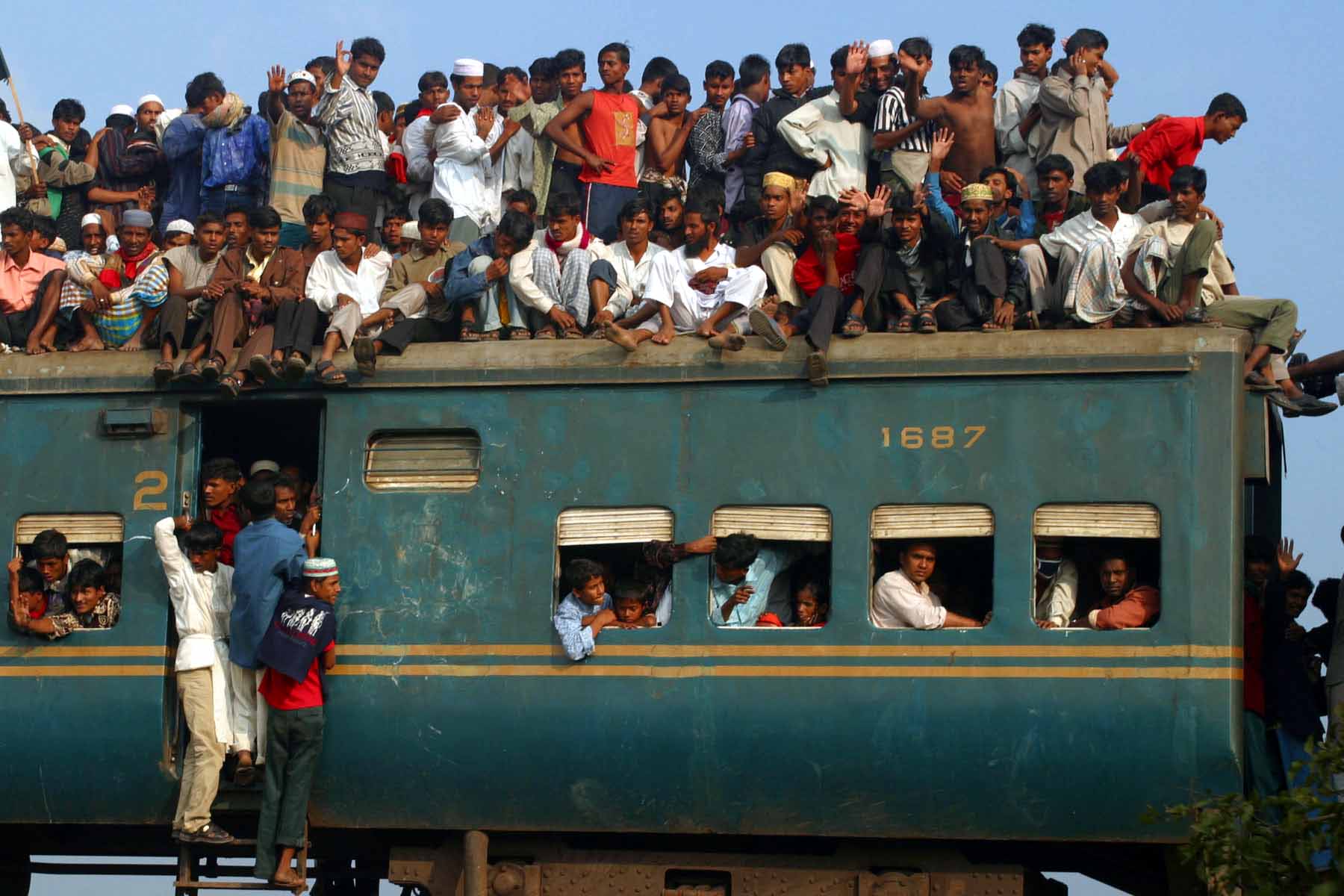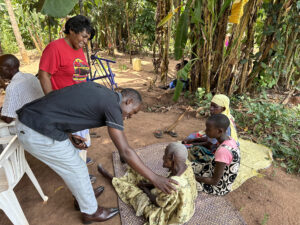
RICHMOND, Va. (BP) — As the global population reached an estimated 7 billion in October, crowds in the United States and other developed countries were “occupying” various city parks and squares to protest corporate greed and other perceived inequalities.
Elsewhere, billions of people continued to focus on more immediate concerns — daily food, water, survival or simple recognition as human beings with inherent worth and dignity. A few snapshots:
India, predicted to overtake China as the world’s most populous country within 20 years, will have to fit a projected 1.6 billion people into about a third of the land China has. Some parts of the Indian subcontinent are rapidly progressing; others, not so much. Fifteen people in India commit suicide every hour, according to a new government report.
Ram Babu, a poor farmer, represents many such tragedies. His crop failed this year because of drought and he couldn’t pay off the loan he had received for a tractor. Creditors hounded and publicly shamed him. “He was an honorable man and couldn’t take the humiliation,” his son told a reporter. “The next day he hanged himself from a tree on his farm.”
In another part of India, 285 young women wearing their best saris recently gathered for a municipal ceremony to receive new names. Most of them had been named Nakusa or Nakusha — which means “unwanted” in Hindi — by families that wanted a boy instead. Tradition and a social preference for boys have led to so many abortions of female children (and neglect of those who are born) that the latest national census in India showed the ratio of girls under age 6 had dropped to 914 for every 1,000 boys.
In China, a national uproar followed an incident caught by a traffic camera in the city of Foshan: 18 people walked or bicycled past a suffering 2-year-old child who had been struck twice by passing vehicles. A rubbish collector finally picked up the child, whose name was Yueyue (“Little Joy”), but she was later pronounced dead at a hospital. Contacted by local media, several of the passersby offered various excuses for ignoring the injured toddler. “That wasn’t my child,” one brutally honest interviewee admitted. “Why should I bother?”
“The fundamental problem, in my view, lies in one word that describes a state of mind: shaoguanxianshi, meaning don’t get involved if it’s not your business,” Chinese author Lijia Zhang wrote after the traffic incident. “We are brought up to show kindness to people in our network of … family and friends and business associates, but not particularly to strangers, especially if such kindness may potentially damage your interest…. We Chinese have every reason to feel proud about what we’ve achieved [in economic progress]. Now we demand respect. But how can we possibly win respect and play the role of a world leader if this is a nation with 1.4 billion cold hearts?”
TIME TO END INDIFFERENCE
It’s easy to condemn others for such callousness, but Zhang’s diagnosis seems universal. If the suffering of others doesn’t directly affect us, how often do we do anything meaningful to change it? In a world of 7 billion people, however, it is increasingly urgent that we reconsider our indifference.
Total world population, which first reached 1 billion only two centuries ago, will top 8 billion by 2025, demographers say. Asia, by far the largest demographic region with more than 4 billion people, likely will increase to 5.3 billion by mid-century. The global total might reach 10 billion by 2083, according to forecasters.
Long-term population growth rates are stabilizing or even declining (sometimes alarmingly) in some areas — particularly Europe, where the population is projected to fall to about 700 million by 2050. Future growth will come almost entirely in the developing world, with the fastest growth in the poorest countries.
Even where population growth continues to surge, however, a potential “youth dividend” could result as young workers fuel productivity and prosperity in once-poor areas of the global East and South, while the West quickly ages. About one in every five people on earth is between the ages of 15 and 24. Eight in 10 of them live in Africa and Asia. Sub-Saharan Africa has the world’s youngest population and will for many years to come.
“The great bulk of today’s 1.2 billion youth — nearly 90 percent — are in developing countries,” Carl Haub, the Population Reference Bureau’s senior demographer, said in 2009. But they need resources, which many lack. “During the next few decades, these young people will most likely continue the current trend of moving from rural areas to cities in search of education and training opportunities, gainful employment and adequate health care.”
Africa’s population alone is projected to double to 2 billion by 2050. At the moment, it is the region least-equipped to support that many people. Africa and other fast-growing regions, especially South Asia, will continue to struggle to provide food, water and other necessities for increasing numbers of people. Some 1.8 billion people will live in areas experiencing severe water scarcity, the International Water Management Agency warns. The same number of people already subsist on the equivalent of $1.25 a day or less, according to U.N. figures. More than 900 million suffer from chronic hunger.
SPIRITUAL INEQUALITY
Such is the current reality of global “resource inequality.” Governments, development agencies, economists and business leaders argue about how to right the balance. But what about “spiritual inequality” — that is, the free access to the Gospel of Christ that most people in the West enjoy, but billions in other places do not?
Much has changed in that regard as the modern mission movement has taken the Good News — not to mention education, medical care and social development — to every corner of the globe. Christianity has taken root and flourished in ways few dared to dream before its explosive expansion in the 20th century and early years of the 21st.
This revolution is “far more sweeping in its implications than any current shifts in North American religion,” historian Philip Jenkins wrote in 2002, the year his landmark book, “The Next Christendom: The Coming of Global Christianity,” was published. “During the past half-century the critical centers of the Christian world have moved decisively to Africa, to Latin America, and to Asia.” If you want to visualize a “typical” contemporary Christian, Jenkins added, “think of a woman living in a village in Nigeria or in a Brazilian favela [urban shantytown].”
In sub-Saharan Africa in particular, Christianity has grown faster than the rate of population growth for the past century, reports Southern Baptist missiologist Grant Lovejoy, who coordinates orality strategy for the International Mission Board. “It has happened there, and this encourages us to believe that it can happen elsewhere in the world,” he says. What’s more, “Christians from rapidly growing countries in sub-Saharan Africa and elsewhere are increasingly a major force in taking the Gospel to ‘the 7 billion.'”
IMB workers have changed methods to promote the rapid spread of the Gospel, Lovejoy adds, by emphasizing intensive prayer for spiritual breakthrough; following simple, reproducible church-planting principles; developing house churches instead of expensive brick-and-mortar buildings; and matching communication approaches to the learning preferences of people groups (through the use of oral Bible storying, for example).
But huge inequalities stubbornly persist.
Of the more than 11,600 distinct people groups in the world identified by mission research, nearly 6,800 remain unreached — that is, fewer than 2 percent of the population in each of those peoples are evangelical followers of Christ. Some 3,800 peoples not only are unreached but are unengaged: No church or Christian group is actively seeking to start a church-planting strategy among them.
Other key needs identified by Lovejoy:
— “In many places, Christianity is not growing as fast as the population is. Many Christians’ attitudes and practices need to change in order for all 7 billion people to have a chance to hear the Gospel and be part of a healthy church. Rapid population growth puts a premium on mission strategies that enable Christianity to grow faster than the population rate.”
— “Many of the countries with high growth rates, such as Yemen, are predominantly Muslim. Loving Muslim people, praying for them, being a blessing to them and offering them an opportunity to learn about Jesus is critically important.”
— “Many of the unengaged, unreached people groups we are encouraging Southern Baptist churches to embrace are in countries with rapid population growth. These countries often have a high percentage of children, teens and young adults, so outreach to those age groups is key.”
Christianity has become a truly global movement in this generation, but there’s much yet to do in a world of 7 billion.
–30–
Erich Bridges is a global correspondent with the International Mission Board.
Get Baptist Press headlines and breaking news on Twitter (@BaptistPress), Facebook (Facebook.com/BaptistPress) and in your email (baptistpress.com/SubscribeBP.asp).

















